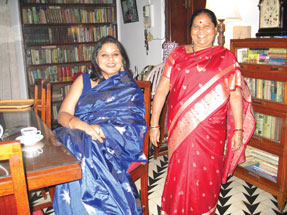|
As told to Monojit Lahiri Nandini Pal is an elementary school teacher in the San Fransisco Bay Area. When I arrived in the United States to attend undergraduate college in 1990, my first shock was my computer. I came from Kolkata where I had worked at a top-of-the-line advertising agency with a cutting edge Mac. I found my college had a handful of backward computers with even fewer people who actually knew how to use them. I was flummoxed. I had come to the United States, expecting to be in a first world country with first world technology. Instead, I met people who had never seen a high rise building and asked me if I lived in a subway in India. A “subway”? I was completely at a loss for words! A shanty, a hut, a village, or a hovel, a cabin, anything. But a subway?
I realized later that that although some of rural USA is incredibly poor, actual poverty, (where the poor live bereft of a roof over their heads, may actually lead to people living in the subway), is urban. Americans live insular lives and to my amazement, brought up as I was with annual vacations traversing India, a lot of the people I met had not even traveled two hours away to the city of San Francisco. Few knew much about world geography or history, which were systematically dinged into our heads back home. And that sadly, has not really changed. I experienced little, if any discrimination, regarding my color or my diction. I spent my entire college years, as the solitary person in salwar kameezes and open-toed chappals without encountering a single raised eyebrow. This was one of the most amazing aspects of America for me: a complete freedom to be oneself. Today, when I go to the farmer’s market on a Sunday morning where I live in the Bay Area, at least one in three women is wearing a salwar or a sari and Macy’s is flooded with kurtis camouflaged as “tops.” Sometimes though, I still hear discriminatory and disparaging remarks about Indians. One example: “First you see an Indian, then an Indian and a wife, then a child in a carriage and another alongside, with two old people behind.” Clearly the resentment has in a way increased. The more exposure there has been, the less the tolerance. As any other immigrant community, we aggregate in communities where jobs are available and other Indians already live. We create our own little ghettos and forget about assimilating. We sometimes are responsible for excluding ourselves from the mainstream community, finding solace instead in a motley collection of Indians who would have found nothing in common if they were “back home.”
Non Resident Indians live in the time warp when they left home even though we make much more frequent visits back than we did 20 years ago. This is nowhere more obvious than when we do make our trips home. I look at myself in last year’s fashions: long kurtas and tight churidars, (still swanking new) since I have not really found the right opportunity to inaugurate them here, while the rest of India is in short kurtis and Patiala salwars! But that is us. It is our mind blocks that keep us struggling. We are always waiting and watching for slights. From a country where we cruelly make fun of our own people (Sardars, Mallus, et al), the dark-skinned (kaluas), the fat, the short, the physically and mentally handicapped and think nothing of calling people mad, retarded, spastic, stupid or (my favorite) donkeys at will, we are suddenly humiliated if someone cannot pronounce our names. I, for one, make quite a hash of Appan Tampuram Kallathil Thiruvattukkal Ezuttacan Pappachan or Warnakulasuriya Patabendige Ushantha Joseph Chaminda Vaas and Parthasarathy Bhattacharya myself! But that is my prerogative, as an Indian. Now,if I were a Caucasian American, that would be a different matter altogether!” Little India invites first person accounts and perspectives for its Indian American Encounters columns. Send submissions to editor@littleindia.com |
Our Mind Blocks Keep Us Struggling

